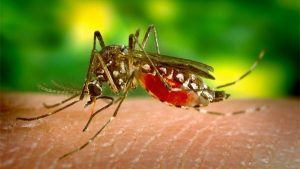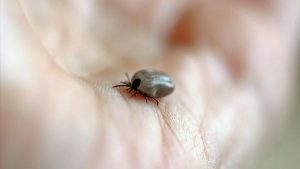The Asian longhorned tick is an invasive species that only recently made its way to the US. Thousands of the insects were discovered on a sheep in NJ in 2017, and it has been spotted in states including Connecticut since then. They don’t belong in our hemisphere at all – as the name suggests, they’re usually found in Asia, but are also common in Australia and New Zealand.
The ticks look very much like rabbit ticks and bird ticks, but researchers are compiling a visual guide that they hope will lead to more accurate identification so they are able to better track and control its spread across the country. (In fact, researchers at Rutgers assert that the tick has been in our area since 2013, but was misidentified as a rabbit tick.)
While these ticks have not been associated with the spread of any illness in the North America since settling in here, National Geographic reports that “longhorned ticks are vectors for serious human diseases – perhaps most notably, severe fever with thrombocytopenia syndrome (SFTS), which can be deadly. And because the U.S. is home to a close relative of SFTS– the Heartland virus—the worry is that the longhorned ticks could eventually start carrying this and other pathogens in America too.”
The ticks pose a greater threat to livestock than humans, at this point, particularly because they can (as noted above) number into the hundreds or thousands as they feed on their host. This can cause weakness due to blood loss, apart from putting animals at greater risk of contracting disease.
More concerning still is the adaptability of the longhorned tick. The arachnid does not need another tick to mate – female ticks can produce up to 2000 eggs all by themselves. In a recent statement, Ben Beard, Ph.D., deputy director of CDC’s Division of Vector-Borne Diseases noted:
“The full public health and agricultural impact of this tick discovery and spread is unknown. In other parts of the world, the Asian longhorned tick can transmit many types of pathogens common in the United States. We are concerned that this tick, which can cause massive infestations on animals, on people, and in the environment, is spreading in the United States.”
The CDC is recommending that people take these proven precautions to protect themselves, their families, pets and livestock from ticks – and these are taken verbatim from their website:
Everyone can take steps to prevent tick bites:
- Use Environmental Protection Agency (EPA)-registered insect repellentsExternal containing DEET, picaridin, IR3535, oil of lemon eucalyptus (OLE), para-menthane-diol (PMD), or 2-undecanone. Always follow product instructions.
- Treat clothing and gear with products containing 0.5 percent permethrin. Permethrin can be used to treat boots, clothing, and camping gear and remain protective through several washings. Alternatively, you can buy permethrin-treated clothing and gear.
- Check your body and clothing for ticks upon return from potentially tick-infested areas, including your own backyard. Use a hand-held or full-length mirror to view all parts of your body. Place tick-infested clothes in a dryer on high heat for at least 10 minutes to kill ticks on dry clothing after you come indoors.
- Shower soon after being outdoors. Showering within two hours of coming indoors has been shown to reduce your risk of getting Lyme disease and may be effective in reducing the risk of other tickborne diseases. Showering may help wash off unattached ticks and is a good time to do a tick check.
- Talk to your veterinarian about tickborne diseases in your area and prevention products for your dog.
Repel can offer additional protection from ticks for your property, family and pets with our eco-friendly, professionally applied formulas. Contact us today to learn how.





